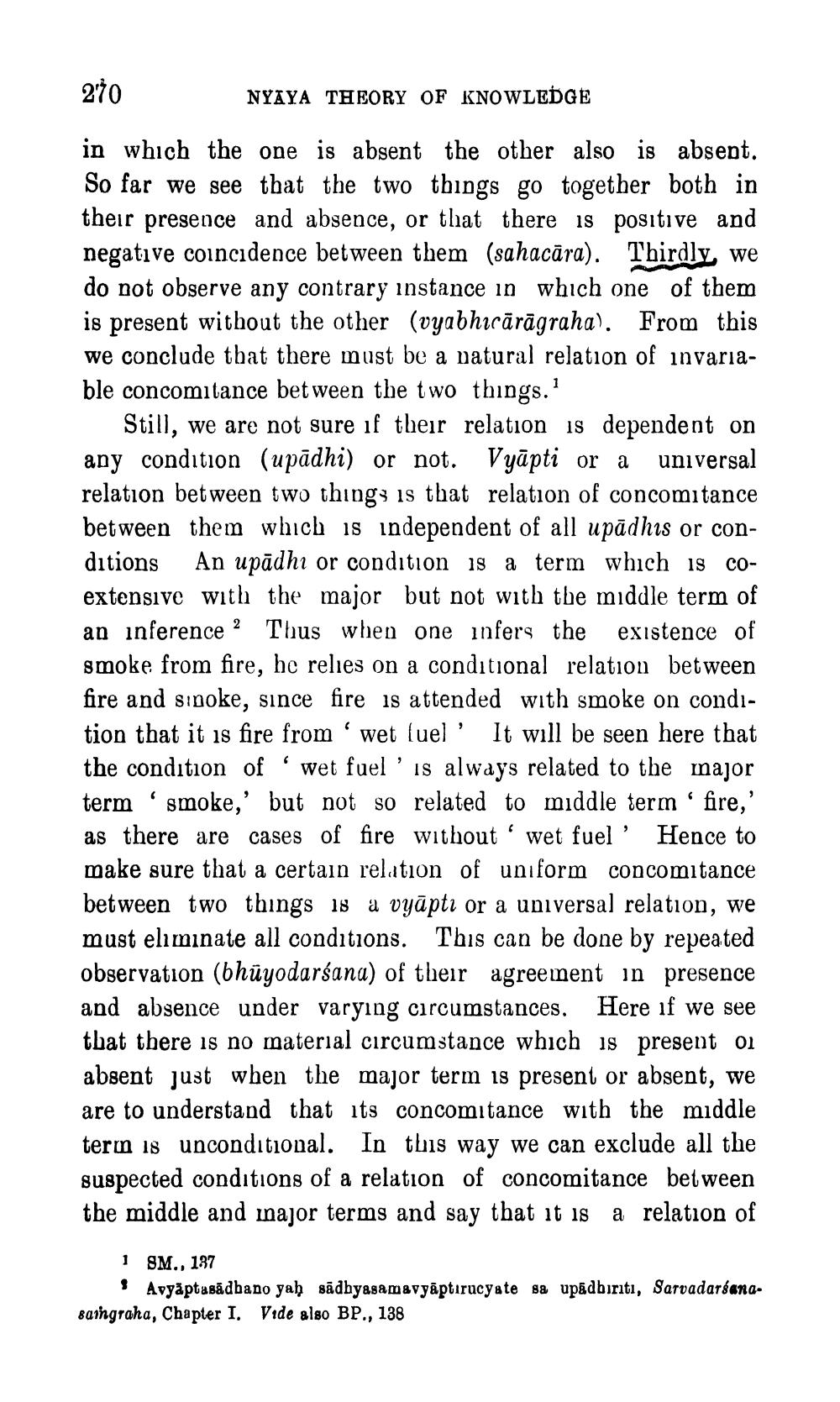________________
270
NYAYA THEORY OF KNOWLEDGE
in which the one is absent the other also is absent. So far we see that the two things go together both in their presence and absence, or that there is positive and negative coincidence between them (sahacāra). Thirdly, we do not observe any contrary instance in which one of them is present without the other (vyabhıcārāgraha). From this we conclude that there must be a vatural relation of invariable concomitance between the two things."
Still, we are not sure if their relation is dependent on any condition (upādhi) or not. Vyāpti or a universal relation between two things is that relation of concomitance between them which is independent of all upādhis or conditions An upādhı or condition is a term which is coextensive with the major but not with the middle term of an inference ? Thus when one infers the existence of smoke from fire, he relies on a conditional relation between fire and sinoke, since fire is attended with smoke on condition that it is fire from 'wet luel' It will be seen here that the condition of 'wet fuel 'is always related to the major term 'smoke,' but not so related to middle term ' fire,' as there are cases of fire without' wet fuel' Hence to make sure that a certain relation of uniform concomitance between two things 18 a vyāpti or a universal relation, we must eliminate all conditions. This can be done by repeated observation (bhūyodarśana) of their agreement in presence and absence under varying circumstances. Here if we see tbat there is no material circumstance which is present ol absent just when the major term is present or absent, we are to understand that its concomitance with the middle terın is unconditional. In this way we can exclude all the suspected conditions of a relation of concomitance between the middle and inajor terms and say that it is a relation of
1 SM., 137
Avyāptasādbano yah sādbyasamavyāptıracyate sa upādbırıtı, Sarvadarsana. saingraha, Chapter I. Vide also BP., 138




